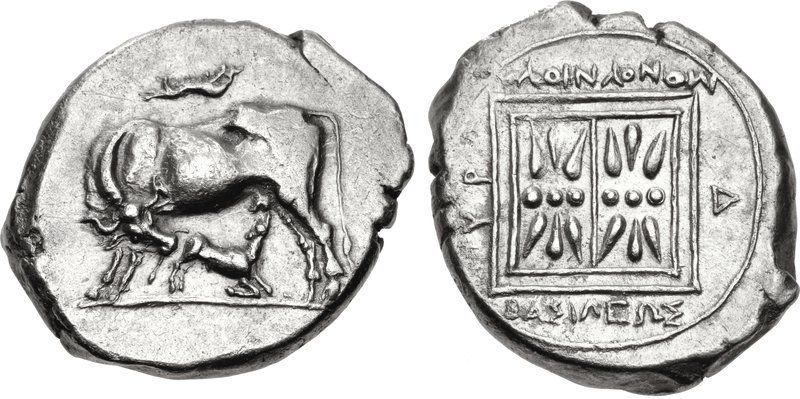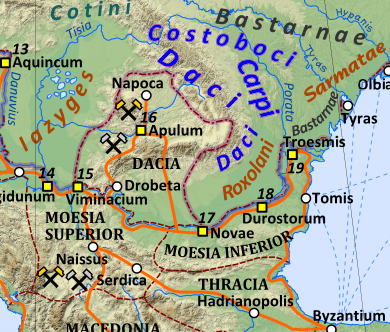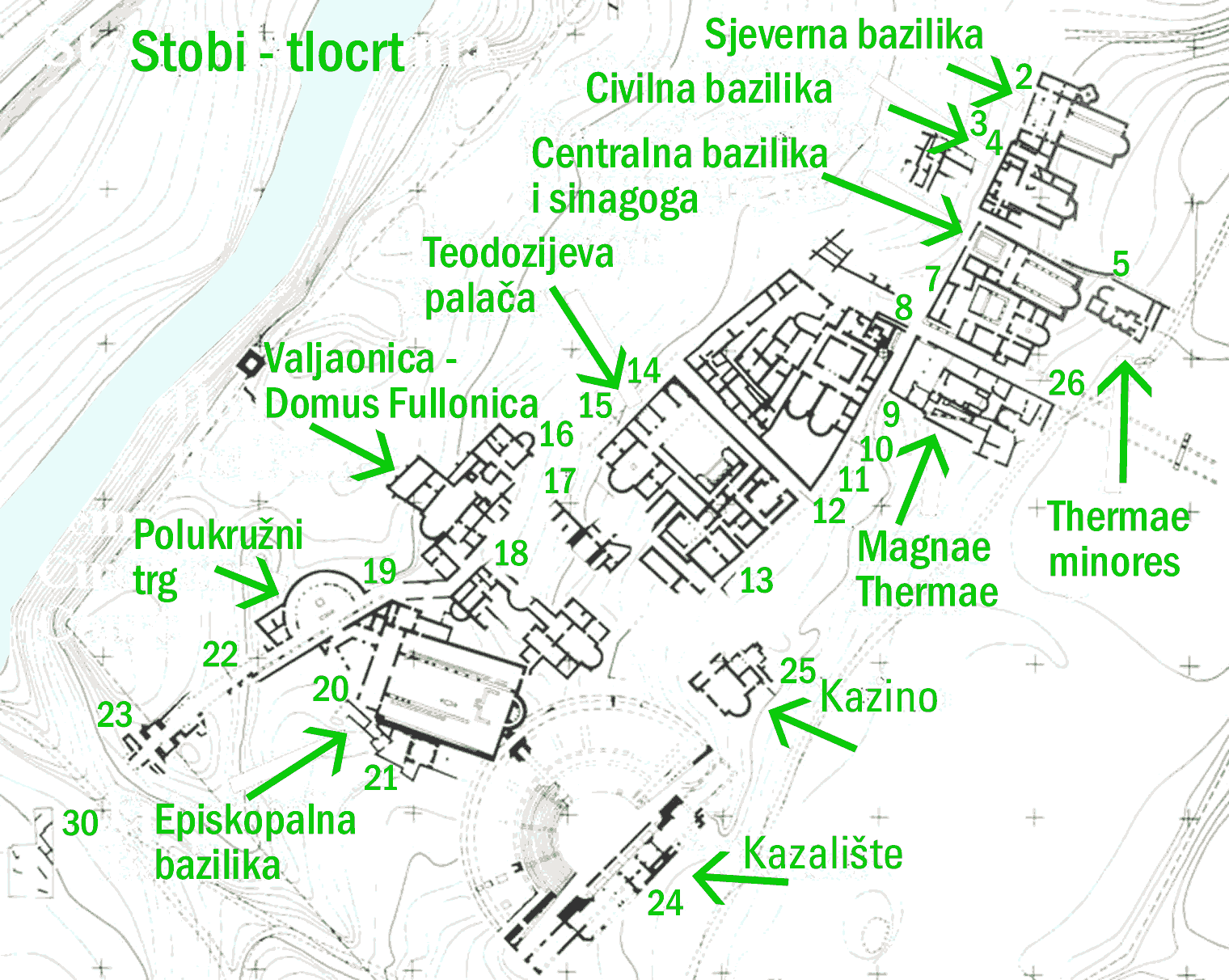|
Bato Of Dardania
Bato (ruled c. 206 – 176 BC) was an Illyrian king of the Dardanian State. Bato was the son of Longarus whom he succeeded and the brother of Monunius II who ruled after him. Bato fought alongside the Romans against Macedon during the Second Macedonian War. Bato is known for using advanced war tactics against Athenagoras. Bato became a major threat to the Macedonians but after the war was over Dardanian and Roman relations soon diminished. Military activities When the Romans returned to Illyria in 200 BC under the experienced commander P. Sulpicius Galba, they expected support from their former allies. After the Roman victories many kings, enemies of Macedonia came to the Roman camp: Pleuratus of the Ardiaean Kingdom, Amynander, king of the Athamanians and Bato of the Dardanian State. The Roman commander told them he would call on their help when his army had entered Macedonia. Bato was hoping that with the territorial gains Rome had achieved, he would have Paeonia ... [...More Info...] [...Related Items...] OR: [Wikipedia] [Google] [Baidu] |
Longarus
Longarus (ruled c. 231 – 206 BC) was an Illyrian king of the Dardanian Kingdom. Longarus was at war with various Macedonian kings and managed to conquer at different times part of Macedonia. Longarus was an ally of the Paeonian State and liberated the Paeonians in order to open the routes towards Macedonia. Longarus' influence grew and many other Illyrians from the Ardiaean Kingdom joined him. Military activities After the Gallic invasions of Dardania, the Dardanians were not heard of for four decades; probably as they were in the process of recovering from the consequences of the Gallic invasions. During that time, the Dardanian State grew stronger and extended its borders in the south and in the north. During the second half of the 3rd century BC, the Illyrian-Macedonian Wars continued because of the desire for territorial expansion by the Macedonian kings against the Dardanians, particularly against Paeonia. The Paeonians had continually rebelled against the Macedonians ... [...More Info...] [...Related Items...] OR: [Wikipedia] [Google] [Baidu] |
Perseus Of Macedon
Perseus ( grc-gre, Περσεύς; 212 – 166 BC) was the last king ('' Basileus'') of the Antigonid dynasty, who ruled the successor state in Macedon created upon the death of Alexander the Great. He was the last Antigonid to rule Macedon, after losing the Battle of Pydna on 22 June 168 BC; subsequently, Macedon came under Roman rule. Early life Perseus was the son of king Philip V of Macedon and a concubine, probably Polycratia of Argos. His father spent most of his reign attempting to maintain Macedonian hegemony over Greece against heavy Greek resistance and, in his later reign, against a expansionist Roman Republic. In this regard Philip V would fail as following defeat in the Second Macedonian War, he would have to accept Roman power in Greece and would later help Rome in the War against Nabis (195 BC) and Aetolian War (191-189 BC). Perseus is recorded as having commanded Macedonian troops in both the Second Macedonian War and Aetolian War. Being a son of a concubine, Per ... [...More Info...] [...Related Items...] OR: [Wikipedia] [Google] [Baidu] |
3rd-century BC Rulers
The 3rd century was the period from 201 ( CCI) to 300 (CCC) Anno Domini (AD) or Common Era (CE) in the Julian calendar.. In this century, the Roman Empire saw a crisis, starting with the assassination of the Roman Emperor Severus Alexander in 235, plunging the empire into a period of economic troubles, barbarian incursions, political upheavals, civil wars, and the split of the Roman Empire through the Gallic Empire in the west and the Palmyrene Empire in the east, which all together threatened to destroy the Roman Empire in its entirety, but the reconquests of the seceded territories by Emperor Aurelian and the stabilization period under Emperor Diocletian due to the administrative strengthening of the empire caused an end to the crisis by 284. This crisis would also mark the beginning of Late Antiquity. In Persia, the Parthian Empire was succeeded by the Sassanid Empire in 224 after Ardashir I defeated and killed Artabanus V during the Battle of Hormozdgan. The Sassanids ... [...More Info...] [...Related Items...] OR: [Wikipedia] [Google] [Baidu] |
Illyrian Royalty
Illyrian may refer to: *Illyria, the historical region on the Balkan Peninsula **Illyrians, an ancient tribe inhabiting Illyria **Illyrian languages, languages of ancient Illyrian tribes * Illyrian (South Slavic), a common name for 17th to 19th century South Slavic languages, the forerunner of Serbo-Croatian *Illyrian movement, cultural movement in 19th century Croatia *Illyricum (Roman province) *Illyrian Provinces, province of the First French Empire *Kingdom of Illyria (1816–49), crown land of Austria * HD 82886, a star officially named Illyrian in Leo Minor Arts and entertainment *Illyrians, a fictional race of humanoids, including the character Una Chin-Riley, in the ''Star Trek'' franchise See also * Illyria (other) * Illyrians (other) * Illyricum (other) * Illyricus (other) Illyricus may refer to: * Bogumil Vošnjak (1882–1955), a Slovene and Yugoslav jurist, politician, diplomat, author and legal historian * Matthias Flacius Illyr ... [...More Info...] [...Related Items...] OR: [Wikipedia] [Google] [Baidu] |
List Of Rulers Of Illyria
The Illyrians, ; la, Illyrii}) were a conglomeration of Indo-European peoples and tribes in the Balkan Peninsula, Southeastern Europe. They spoke the Illyrian language and practiced a multitude of common religious and cultural practices. Many of Illyrian groups formed a distinct tribal mode of social organisation, which survived much later in the form of the Albanian tribal system. In late Iron Age and early classical antiquity, the first polities of the area would be created by tribal groupings, including the Taulantii and Dardani. The most powerful Illyrian states of the area, the Ardiaean kingdom, emerged in the 3rd century BC during the rule of Agron and Teuta. The Illyrians came into conflict with Roman Republic and were defeated in the Illyrian Wars, which were followed by many revolts. The largest and last of them was the Great Illyrian Revolt (6-9 BC). The beginning of the integration of the region of Illyria in the Roman world followed the revolt and saw many Illyria ... [...More Info...] [...Related Items...] OR: [Wikipedia] [Google] [Baidu] |
Italy
Italy ( it, Italia ), officially the Italian Republic, ) or the Republic of Italy, is a country in Southern Europe. It is located in the middle of the Mediterranean Sea, and its territory largely coincides with the homonymous geographical region. Italy is also considered part of Western Europe, and shares land borders with France, Switzerland, Austria, Slovenia and the enclaved microstates of Vatican City and San Marino. It has a territorial exclave in Switzerland, Campione. Italy covers an area of , with a population of over 60 million. It is the third-most populous member state of the European Union, the sixth-most populous country in Europe, and the tenth-largest country in the continent by land area. Italy's capital and largest city is Rome. Italy was the native place of many civilizations such as the Italic peoples and the Etruscans, while due to its central geographic location in Southern Europe and the Mediterranean, the country has also historically been home ... [...More Info...] [...Related Items...] OR: [Wikipedia] [Google] [Baidu] |
Bastarnae
The Bastarnae (Latin variants: ''Bastarni'', or ''Basternae''; grc, Βαστάρναι or Βαστέρναι) and Peucini ( grc, Πευκῖνοι) were two ancient peoples who between 200 BC and 300 AD inhabited areas north of the Roman frontier on the Lower Danube. The Bastarnae lived in the region between the Carpathian Mountains and the river Dnieper, to the north and east of ancient Dacia. The Peucini occupied the region north of the Danube Delta. The earliest Graeco-Roman historians to refer to the Bastarnae imply that they spoke Celtic languages. In contrast, later historical sources imply that they spoke Germanic languages, and could be considered Germanic peoples. Like other peoples who lived in the same geographical region, Graeco-Roman writers also referred to the Bastarnae as a "Scythian" people, but this was probably a reference to their general way of life, rather than a linguistic category. Although largely sedentary, some elements may have adopted a semi-nomadi ... [...More Info...] [...Related Items...] OR: [Wikipedia] [Google] [Baidu] |
Celts
The Celts (, see pronunciation for different usages) or Celtic peoples () are. "CELTS location: Greater Europe time period: Second millennium B.C.E. to present ancestry: Celtic a collection of Indo-European peoples. "The Celts, an ancient Indo-European people, reached the apogee of their influence and territorial expansion during the 4th century bc, extending across the length of Europe from Britain to Asia Minor."; . " e Celts, were Indo-Europeans, a fact that explains a certain compatibility between Celtic, Roman, and Germanic mythology."; . "The Celts and Germans were two Indo-European groups whose civilizations had some common characteristics."; . "Celts and Germans were of course derived from the same Indo-European stock."; . "Celt, also spelled Kelt, Latin Celta, plural Celtae, a member of an early Indo-European people who from the 2nd millennium bce to the 1st century bce spread over much of Europe."; in Europe and Anatolia, identified by their use of Celtic langua ... [...More Info...] [...Related Items...] OR: [Wikipedia] [Google] [Baidu] |
Stobi
Stobi or Stoboi ( grc, Στόβοι, Stóboi; la, Stobi; mk, Стоби, Stobi), was an ancient town of Paeonia, later conquered by Macedon, and finally turned into the capital of the Roman province of Macedonia Salutaris. It is located near Gradsko, North Macedonia, on the main road that leads from the Danube to the Aegean Sea and is considered by many to be the most famous archaeological site in North Macedonia. Stobi was built where the Erigon (Crna River) joins the Axios (Vardar), making it strategically important as a center for both trade and warfare. The pre-Roman period Stobi developed from a Paeonian settlement established in the Archaic period. Located on the northern side of a terrace, the early town covered an area of about . Its proximity to the junction of the Erigón and Axiós Rivers as well as its position in the fertile central Vardar valley allowed it quickly to develop a flourishing economy and to establish trade. Nearby Mount Klepa was a lucrative s ... [...More Info...] [...Related Items...] OR: [Wikipedia] [Google] [Baidu] |
Vardar
The Vardar (; mk, , , ) or Axios () is the longest river in North Macedonia and the second longest river in Greece, in which it reaches the Aegean Sea at Thessaloniki. It is long, out of which are in Greece, and drains an area of around . The maximum depth of the river is . Etymology The origin of the name ''Vardar'' derives from Thracian ''Vardários''. It comes from Proto-Indo-European (PIE) *''(s)wordo-wori-'' ("black water"). It can be considered a translation or similar meaning of ''Axios'', which itself is Thracian for 'not-shining' from PIE *''n.-sk(e)i'' (cf. Avestan ''axšaēna'' ("dark-coloured")). It is found in another name of the city at the mouth of the Danube, called ''Axíopa'' ("dark water") in Thracian, which was later translated into Slavic as '' Cernavodă'' (“black water”).Katičic', Radoslav. ''Ancient Languages of the Balkans''. Paris: Mouton, 1976: 149 The name ''Vardários'' (Βαρδάριος) was sometimes used by the Ancient Greeks in the 3rd ... [...More Info...] [...Related Items...] OR: [Wikipedia] [Google] [Baidu] |
Apollonia, Illyria
Apollonia (Ancient Greek, Koine Greek: Ἀπολλωνία, ἡ; city-ethnic: Ἀπολλωνιάτης, ''Apolloniates''; la, Apollonia; sq, Apollonia or ''Apolonia'') was an Ancient Greek trade colony which developed into an independent polis, and later a Roman city, in southern Illyria. It was located on the right bank of the Aoös/Vjosë river, approximately 10 km from the eastern coast of the Adriatic Sea. Its ruins are situated in the county of Fier, close to the village of Pojan, in Albania. Apollonia was founded around 600 BC by Ancient Greek colonists from Corinth and possibly Corcyra as a trading settlement after an invitation by local Illyrians on a largely abandoned coastal site. It was perhaps the most important of the several classical towns known as '' Apollonia''. Corinthian colonial policy seems to have been relatively liberal, and was more focused towards resource extraction so as to support the growing Corinthian population, rather than exploitation or ... [...More Info...] [...Related Items...] OR: [Wikipedia] [Google] [Baidu] |
Pelagonia
Pelagonia ( mk, Пелагонија, Pelagonija; el, Πελαγονíα, Pelagonía) is a geographical region of Macedonia named after the ancient kingdom. Ancient Pelagonia roughly corresponded to the present-day municipalities of Bitola, Prilep, Mogila, Novaci, Kruševo, and Krivogaštani in North Macedonia and to the municipalities of Florina, Amyntaio and Prespes in Greece. History In antiquity, Pelagonia was roughly bounded by Paeonia to the north and east, Lynkestis and Almopia to the south and Illyria to the west; and was inhabited by the Pelagones, an ancient Greek tribe of Upper Macedonia, who were centered at the Pelagonian plain and belonged to the Molossian tribal state or ''koinon''. The region was annexed to the Macedonian kingdom during the 4th century BC and became one of its administrative provinces. In medieval times, when the names of Lynkestis and Orestis had become obsolete, Pelagonia acquired a broader meaning. This is why the Battle of Pelagonia ... [...More Info...] [...Related Items...] OR: [Wikipedia] [Google] [Baidu] |







